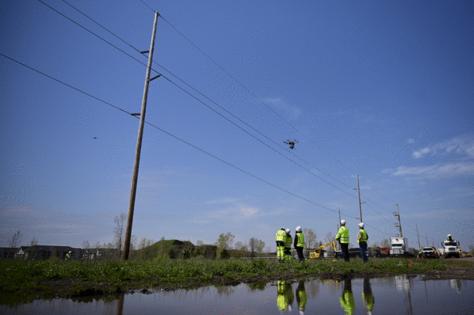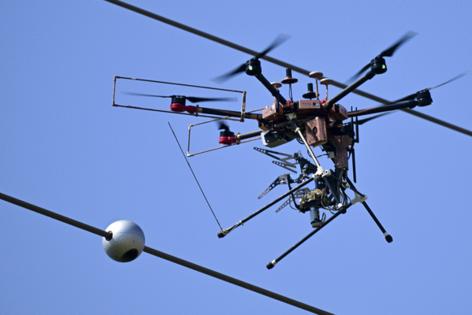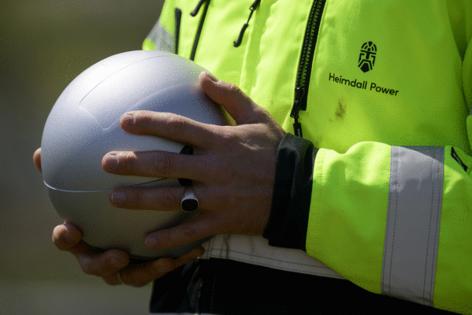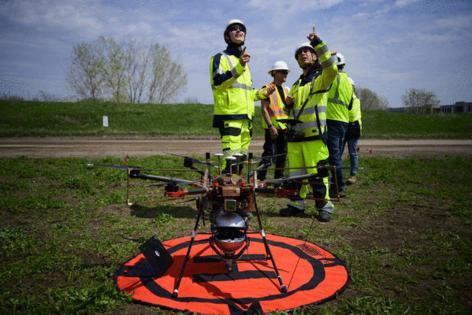Balls, orbs or neurons: the pioneering tech helping a rural utility company manage transmission lines
Published in Science & Technology News
Steady gusts of wind swept across a field in Maple Grove, Minnesota, last week as Warren Grange of Heimdall Power flew a drone to attach what looks like a high-tech cantaloupe on to a power line.
The small sphere, which the Norway-based company officially calls a "neuron," has drawn nicknames like "magic ball" or "orb." Whatever the name, electric cooperative Great River Energy plans to install 52 of these round devices as a way to ease one of the toughest problems facing the modern energy sector: Electric utilities are running out of space on transmission lines to transport a growing amount of wind power and other energy. While more power lines are in the works, those infrastructure upgrades are often expensive.
The Heimdall technology aims to let more power flow along existing wires, which Great River believes could delay major infrastructure work and save its customers money. The nonprofit provides electricity for roughly 1.7 million people through 27 mostly rural cooperatives, ranging from northeast Minnesota to the Iowa border.
Priti Patel, vice president of transmission for Great River, said the orbs "can unlock untapped capacity," and no utility in the country has made a bigger bet on the product.
Great River tested the neurons first, trying out four of them last year. That pilot project found information the sensors provided could allow 42.8% more electricity to flow down a power line.
"If you can increase capacity, ability for these lines to transmit electricity, which is going to be increasingly and predominantly clean electricity, 40% is a big deal," said Allen Gleckner, executive lead of policy and programs for the St. Paul-based nonprofit Fresh Energy.
Jørgen Festervoll, CEO of Heimdall, said most utilities have to operate their grids conservatively, restricting them typically 20-40% below actual capacity limits.
The Heimdall neurons monitor the temperature of the line, whether it is sagging, and other data like weather conditions.
"Without software and sensors like this showing the actual temperature on the line, it's like driving without a speedometer," Festervoll said. "And when you're driving critical infrastructure, you do not want to speed, you want to be on the safe side."
That was fine in the past, he said. But power grids are facing the challenge of handling an influx of renewable energy — far from where consumers use the electricity — and rising demand for electricity due in part to electric vehicles and data centers.
...continued
©2024 StarTribune. Visit at startribune.com. Distributed by Tribune Content Agency, LLC.














Comments